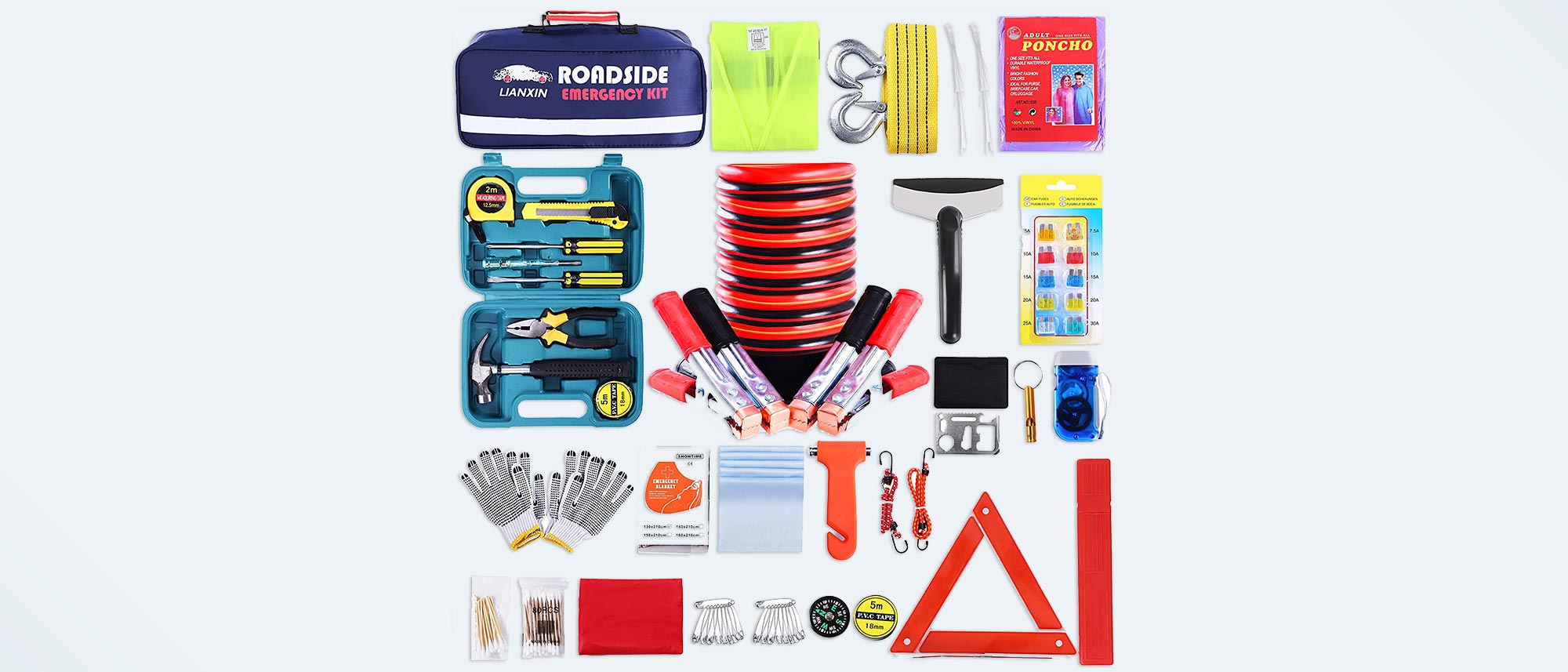Tom's Guide Verdict
The Lianxin Roadside Emergency Kit is a good start to kitting out your car to handle any emergency situations, but the fact it lacks key essentials means it’s little more than that.
Pros
- +
Includes toolkit
- +
8-foot jumper cables
- +
Self-powered flashlight
- +
22 major items
Cons
- -
No extra room in bag
- -
Lacks some important tools
- -
Annoying smell
Why you can trust Tom's Guide
Size: 13.5 x 7.0 x 6.4 inches
Weight: 7.6 pounds
Number of items: 22
Jumper cables/length: Yes/8-feet
First aid kit: No
Air pump: No
Shovel: No
Flashlight: Yes
Fire extinguisher: No
Roadside assistance: No
The Lianxin Road Emergency Kit sells for $65, about what similar kits cost, yet contains lots of small emergency items. The company also sells Automotive cleaning products, in case your car is in need of sprucing up.
While it lacks must-haves, like a tire inflator and first aid kit, the Lianxin Roadside Emergency kit is a good start. Sadly the kit lacks many basics, and has no room to add anything of your own.
Packaged in a long narrow black bag, the Lianxin Roadside Emergency Kit can help with roadside problems but lacks any of the big items that can help get you back on the road. Made of heavy-duty nylon, the bag measures 13.5 x 7.0 x 6.4 inches and one side has a pair of reflective stripes for night-time breakdowns.
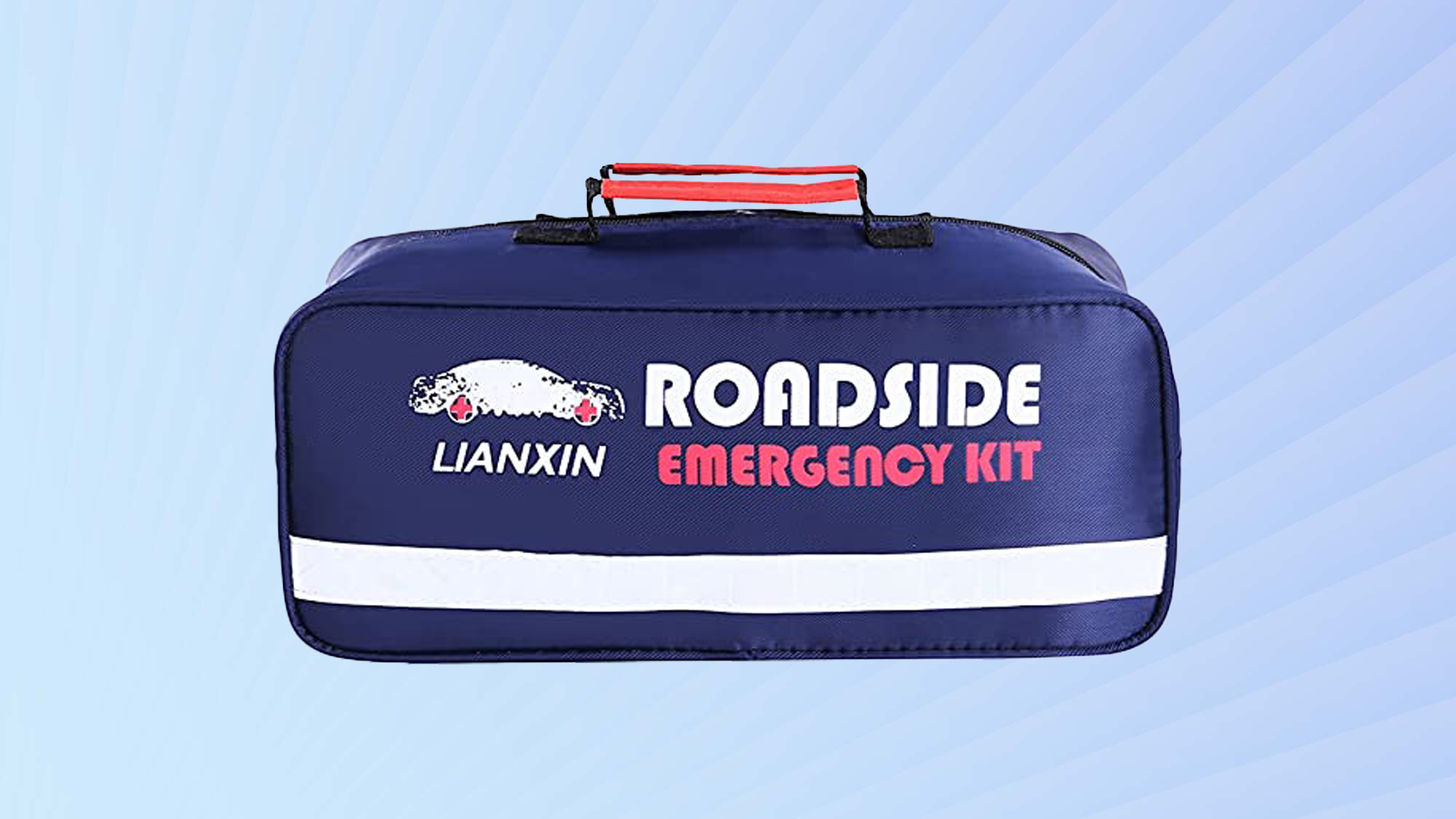
While the bag and its contents were generally well made, and should last, they had the annoying smell of mothballs that took a few days of riding around in the back of my car to dissipate. The bag was also too big to fit under my front seat.
With all the included items, the kit weighed 7.6 pounds. Everything barely fit inside, leaving no room for any additional gear. An outside pocket, like on the Justin Case bag, would have been a huge help.
According to Lianxin, the kit contains 142 items, but that's only true only if you count every single item individually - like the 20 safety pins and five cloth scraps. That said, I counted 22 major items in the kit. They range from a towing strap and window breaker to elastic bungie cords, a pair of work gloves and a reflective vest.
Its jumper cables have adequate 8-foot long cords but the clips are not marked for positive and negative polarity. This might prove to be a problem for the inattentive, although the connectors are colored red and black.
There’s a self-powered flashlight for night work that has three LED elements. Bright enough to spot problems and do some quickie repairs by, it can be charged by pressing the handle quickly; After 20 presses, it lasted for more than five hours. The kit also has fold-open reflective triangles to warn fellow motorists at night.
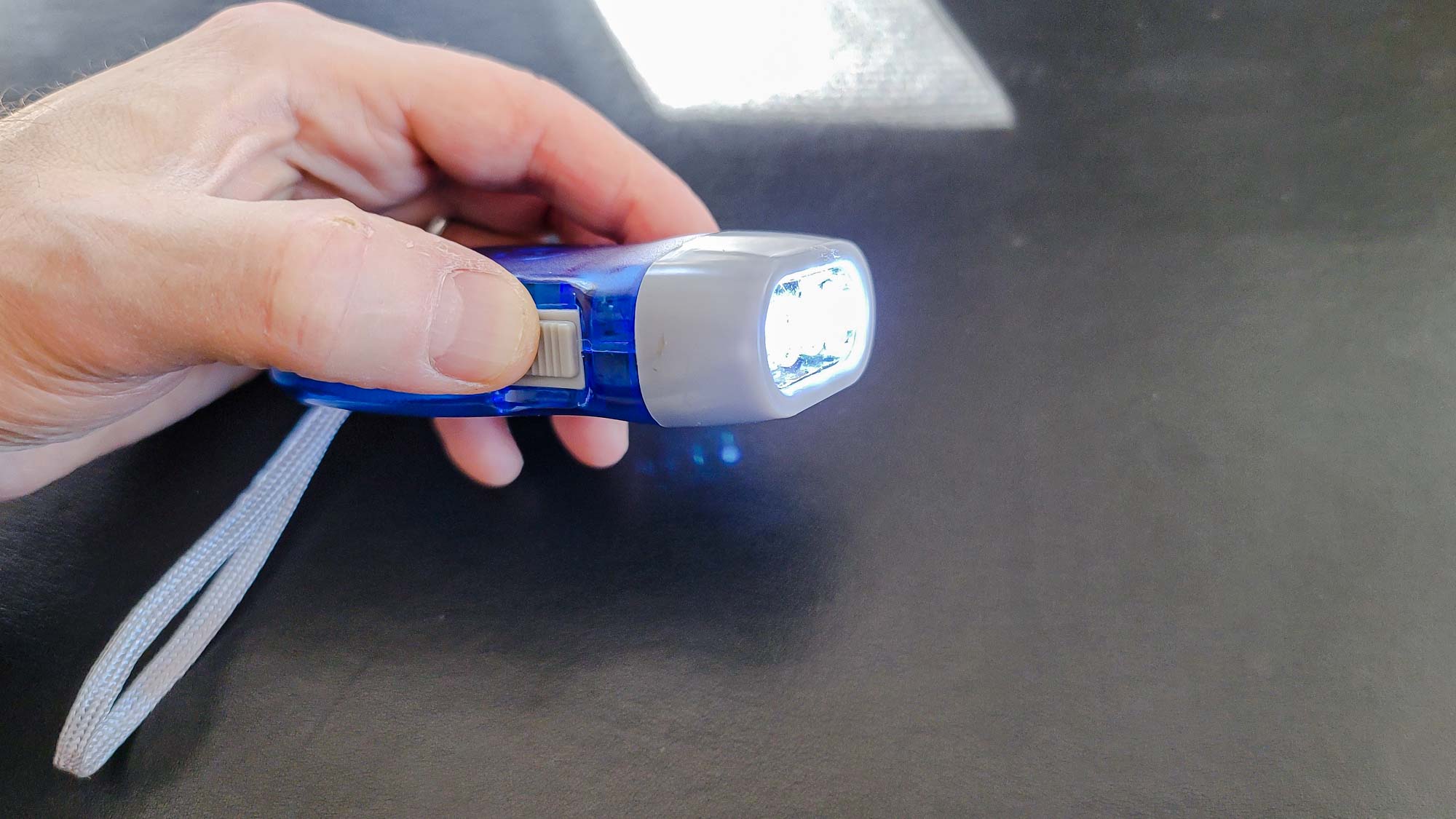
The Roadside Emergency Kit’s toolkit is what sets it apart from the crowd. Packaged in its own molded plastic case, the kit includes screwdrivers, a hammer, knife, ape measure and pliers, although it does without any sockets or wrenches. Still, it’s among the best toolkits to come with an emergency car kit.
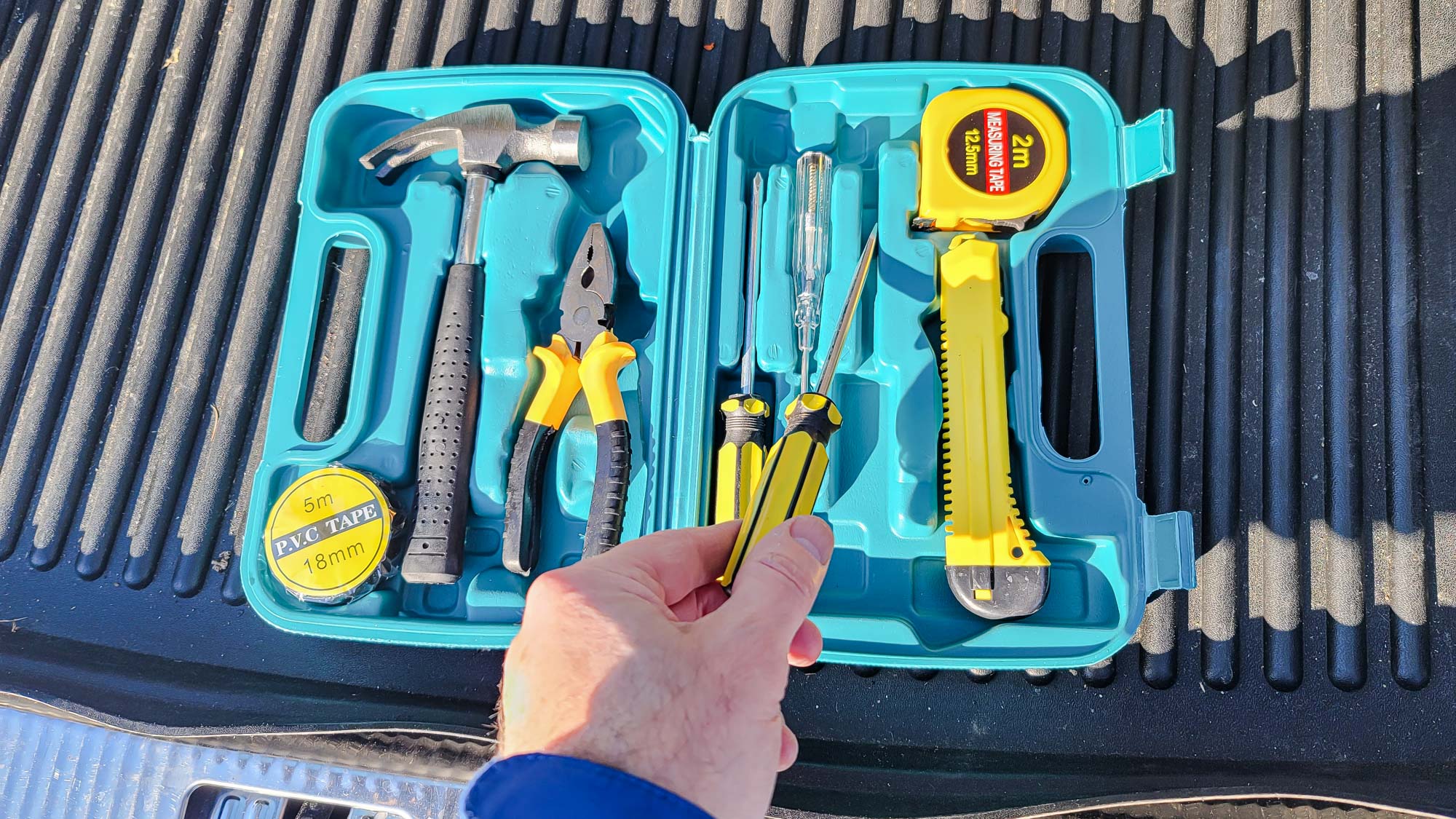
This kit also keeps you ready for roadside electrical problems, with replacement fuses, a circuit tester, cable ties and roll of electrical tape.
But what’s missing is just as important as what's inside. On top of the missing fire extinguisher and tire inflator, the Roadside Emergency Kit does without things I would take for granted in a breakdown kit, like a first aid kit. Instead, you’ll have to get by with a mylar blanket, cotton swabs and a slew of safety pins. In other words, it’s not much help for even a simple cut.
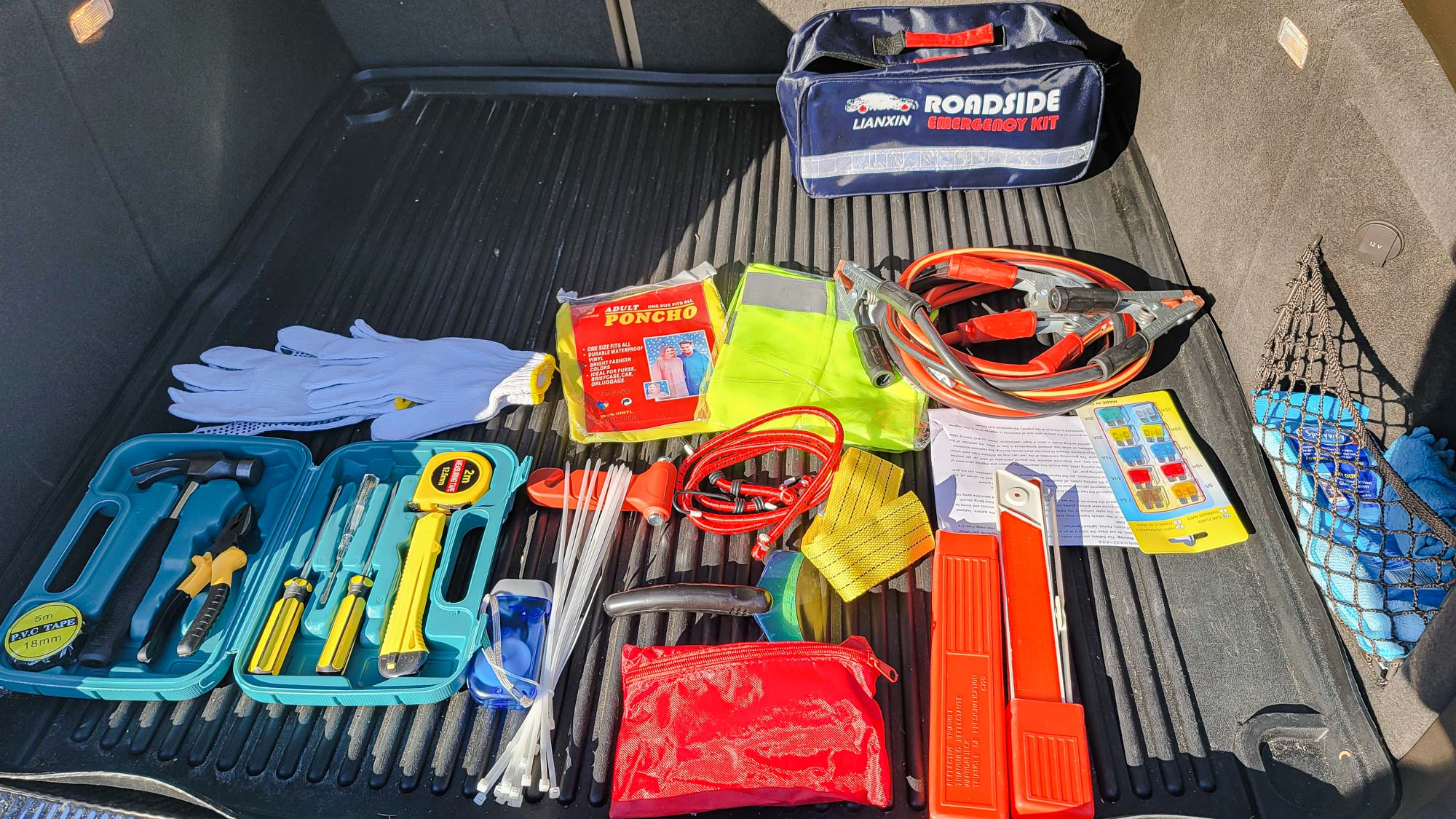
The poncho and ice scraper means The Roadside Emergency Kit can help during bad weather, but it lacks a shovel to dig yourself out during a snowstorm. The kit does have a thoughtful half-page form for recording the details of an accident, mimicking what the police use, but does without anything like the Justin Case kit’s year of roadside assistance.
While the LianxinRoadside Emergency kit contains a lot of useful things, particularly the toolkit, it's little more than a good start. The missing items, and lack of space to add your own, makes sure of that.
Brian Nadel is a freelance writer and editor who specializes in technology reporting and reviewing. He works out of the suburban New York City area and has covered topics from nuclear power plants and Wi-Fi routers to cars and tablets. The former editor-in-chief of Mobile Computing and Communications, Nadel is the recipient of the TransPacific Writing Award.
